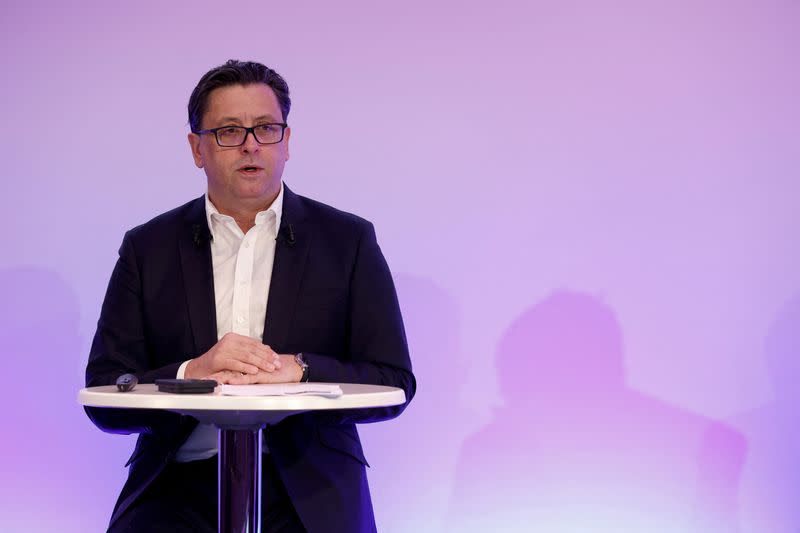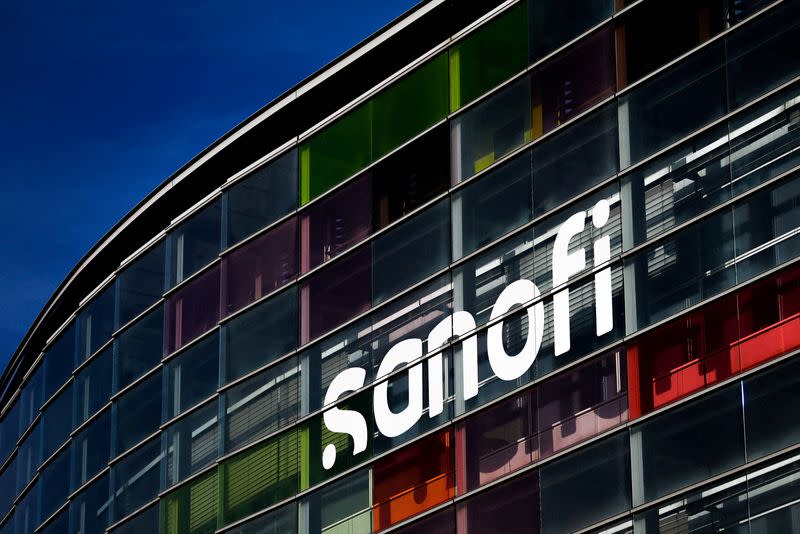Sanofi CEO under pressure to woo investors after spending shock
By Ludwig Burger
(Reuters) -Sanofi's CEO is under pressure to tell investors how much more he will spend on research and development (R&D) and what the likely pay-offs will be, as he seeks to boost a pipeline of future drugs and restore shareholder trust.
Shares in the 108 billion euro ($117 billion) French pharmaceutical giant tumbled 15% on Oct. 27 when CEO Paul Hudson unexpectedly abandoned 2025 margin targets in order to boost the budget for testing new immunology and inflammation drugs.
The market's shock reaction, compounded by a lack of details of the spending push, overshadowed Sanofi's plan to list its consumer unit, in line with an industry trend.
The British CEO, who was hired four years ago to revive the company's drug pipeline, said the strategy promises better earnings further down the line, but he would not disclose more details until a Dec. 7 investor day.
Investors have told Reuters that Hudson, whose current term started last year and expires in 2026, needs to lay out more precisely how much he plans to spend on each experimental drug and the commercial opportunity they offer.
"The first step is getting out there with the data and the reasons to believe in these programmes," said Dan Lyons, a portfolio manager at Janus Henderson Investors in Denver.
He said he was surprised by the plunge in the shares - steep even by the standards of current market jitters - but said the announcement was unexpected and lacked explanations.
The stock has underperformed rivals in recent years as shareholders worry the company is too reliant on its bestseller, anti-inflammatory drug Dupixent.
The shares trade at the equivalent of 11 times expected earnings over the next 12 months, according to LSEG data, compared with 15 and 16 for the European and global pharmaceutical indices respectively.
Before the surprise R&D news, Hudson was already under pressure from losing out in the COVID-19 vaccine race and after a once-promising breast cancer drug candidate flopped last year.
But new drug launches this year, haemophilia treatment Altuviiio, Beyfortus to prevent a common respiratory infection in infants and type 1 diabetes treatment Tzield, had since then rekindled some trust in Sanofi's development abilities.
Abandoning the 2025 goal was particularly contentious because it broke with a tradition of meeting financial targets, while asking for trust in a development track record which has flaws, said fund managers including Markus Manns at Germany's Union Investment.
David Song, a portfolio manager and investment partner at Tema ETF, said: "The narrative of Sanofi has been a margin expansion, earnings-driven story for a lot of investors."
Sanofi did not respond to a request for comment.
DRUGS UNDER SCRUTINY
Still, relative to sales, Sanofi's R&D budget of about 15.6% last year is well below a sector average of 20%-22%, said Fabian Wenner, wealth management analyst at Swiss bank Julius Baer.
"Sanofi had to catch up, but the announcement was too sudden a change for shareholders," he said, adding he too wanted a detailed breakdown of expenses.
Union's Manns suggested that sharing costs with development partners, a common practice in the industry, was a way to take the edge off the R&D budget ramp-up.
The drug candidates under particular scrutiny include frexalimab against multiple sclerosis, eczema drug amlitelimab to build on the success of mega-blockbuster Dupixent and a pneumococcal vaccine, all to be tested in costly phase III trials from next year.
Janus Henderson's Lyons said he was seeking clarity on how Sanofi plans to advance blood cancer drugs known as anti-CD38, including Sarclisa, GenMab and Johnson & Johnson's strong foothold with Darzalex.
Tema ETF's Song said a one-year delay in earnings growth may well be acceptable in exchange for the prospect of higher profits beyond 2025.
"Shouldn't investors give credit to managements who care about long-term shareholder value creation?," said Song.
($1 = 0.9206 euros)
(Reporting by Ludwig Burger; Editing by Josephine Mason and Emelia Sithole-Matarise)


